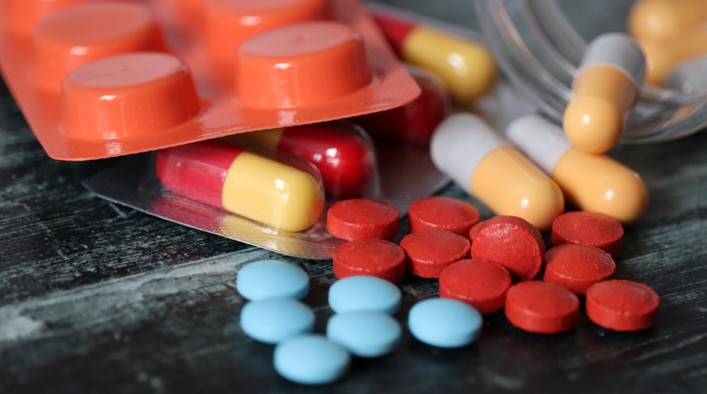
In recent years, the pharmaceutical industry has witnessed a surge in the availability of generic medications, often touted as more affordable alternatives to their brand-name counterparts. Jardiance, a medication primarily used to treat type 2 diabetes, is no exception to this trend. With the patent for Jardiance (empagliflozin) expiring, generic versions have started to make their way into the market. This development raises a critical question: Are these generic brands of Jardiance just as effective as the original drug? To unravel the truth, we must delve into the intricacies of generic medications, their regulation, and the evidence supporting their effectiveness.
Understanding Generics and Bioequivalence
Generic drugs are essentially copies of brand-name medications that contain the same active ingredients, dosage forms, routes of administration, and intended use. They are designed to provide therapeutic equivalence to their brand-name counterparts at a lower cost, making them more accessible to a wider range of patients. However, before a generic medication can be approved and marketed, it must demonstrate bioequivalence to the original drug.
Bioequivalence is the cornerstone of generic drug approval. It ensures that the generic medication achieves the same concentration of the active ingredient in the bloodstream as the brand-name drug. Regulatory agencies, such as the U.S. Food and Drug Administration (FDA), have stringent guidelines in place to ensure that generic drugs meet these bioequivalence criteria. This means that, theoretically, a well-manufactured and properly tested generic version of Jardiance should provide the same therapeutic effects as the original drug.
The Regulatory Landscape
When it comes to approving generic medications, regulatory agencies conduct rigorous assessments to ensure their safety and efficacy. Generic drug manufacturers are required to submit an Abbreviated New Drug Application (ANDA), which includes data from various studies demonstrating bioequivalence. These studies typically involve comparing the pharmacokinetics of the generic drug to that of the brand-name drug in healthy volunteers.
For medications like Jardiance, which have a well-defined therapeutic window and are used to manage chronic conditions, the demonstration of bioequivalence becomes even more critical. The FDA’s Orange Book provides a list of approved generic drugs along with their corresponding reference (brand-name) products, offering healthcare professionals and patients a reliable resource for evaluating therapeutic alternatives.
Clinical Implications and Patient Concerns
Patients often express concerns about switching from a brand-name medication to its generic equivalent. These concerns may stem from fears that the generic version will not be as effective or that its safety profile might differ. It’s important to address these concerns with accurate information.
The evidence supporting the efficacy of generic medications lies in their rigorous testing and approval processes. Generic drugs must meet the same high standards for quality, safety, and effectiveness as brand-name drugs. The bioequivalence studies conducted during the approval process are designed to demonstrate that the generic medication performs equivalently to the brand-name drug in terms of its pharmacokinetics.
Patients who are considering switching from brand-name Jardiance to its generic counterparts should consult their healthcare providers. Physicians and pharmacists can provide personalized advice based on a patient’s medical history, overall health, and the specific generic formulation available. It’s worth noting that some patients may experience variations in response when switching between different formulations of the same medication, whether brand-name or generic. This highlights the importance of regular communication with healthcare professionals during any transition.
Real-World Evidence
Real-world evidence plays a crucial role in assessing the effectiveness of generic medications over time. Post-marketing surveillance, pharmacovigilance, and patient-reported outcomes contribute to the ongoing evaluation of generic drugs. As patients continue to use generic versions of Jardiance, the accumulation of real-world data will provide insights into their long-term effectiveness and safety.
It’s worth noting that variations can exist between different generic versions of a medication due to factors such as manufacturing processes and inactive ingredients. However, these differences are tightly regulated to ensure that they fall within acceptable limits. Patients who do experience notable differences after switching to a generic medication should communicate these observations with their healthcare providers.
The Cost Factor
One of the primary drivers behind the popularity of generic medications is their affordability. Brand-name drugs often come with a higher price tag due to the costs associated with research, development, and marketing. Generic manufacturers, on the other hand, can bring their products to market at a lower cost, passing on the savings to consumers and healthcare systems.
For patients who face financial constraints or lack comprehensive prescription coverage, generic versions of medications like Jardiance can be a lifeline. These more affordable options enable patients to continue their treatment regimens without straining their budgets.
Conclusion
In the realm of pharmaceuticals, the introduction of generic medications raises questions about their equivalence to brand-name drugs. For Jardiance, a medication crucial in managing type 2 diabetes, generic versions are emerging as accessible alternatives. Regulatory agencies rigorously evaluate and approve generic drugs based on their bioequivalence to the brand-name counterparts. This process ensures that generic versions, including those of Jardiance, should provide the same therapeutic effects as the original drug.
Patient concerns about switching to generic medications are valid but can be addressed through a deeper understanding of the regulatory landscape and clinical evidence. Healthcare providers play a pivotal role in guiding patients through such transitions and monitoring their responses.
As the use of generic Jardiance continues to grow, real-world evidence will contribute to our understanding of their long-term effectiveness and safety. For many patients, the affordability of these generic alternatives can make a significant difference in their ability to adhere to treatment regimens and achieve optimal health outcomes.
In conclusion, the emergence of generic versions of Jardiance holds the potential to enhance patient access to effective diabetes management. With proper regulation, adherence to bioequivalence standards, and ongoing real-world evaluation, these generic options can play a pivotal role in the broader landscape of diabetes care.